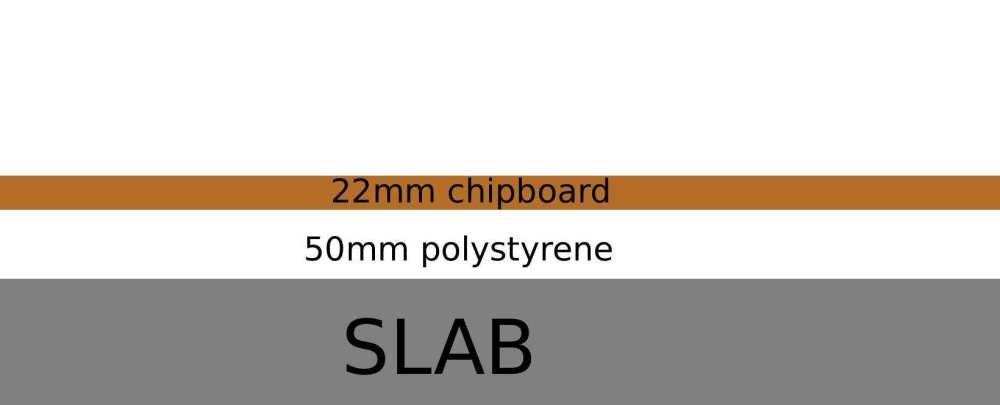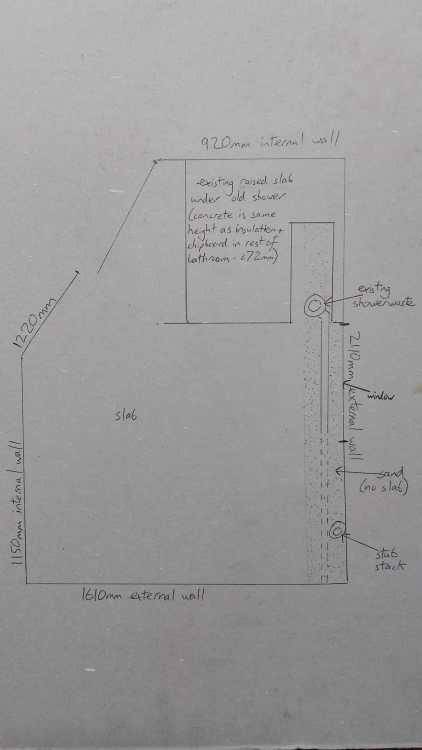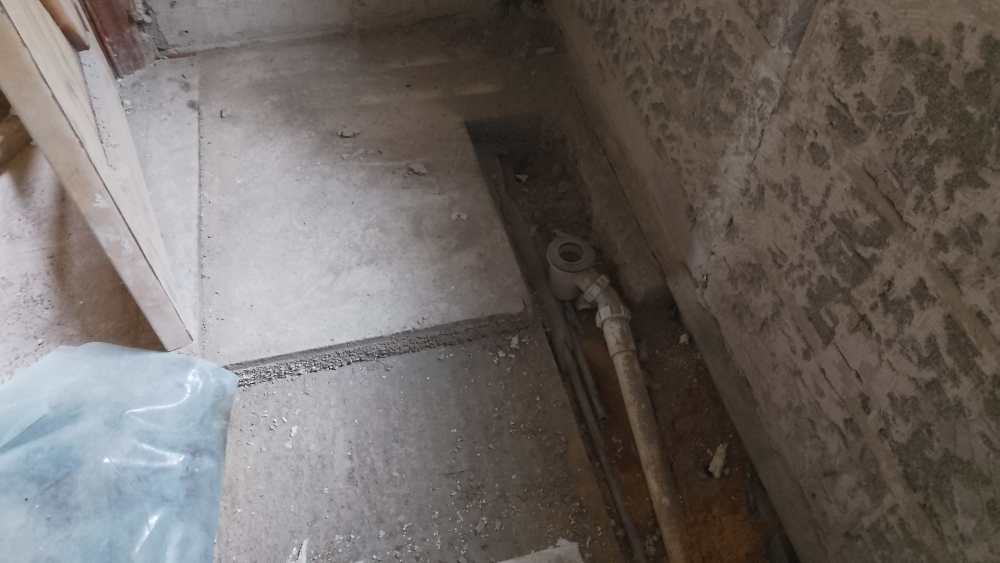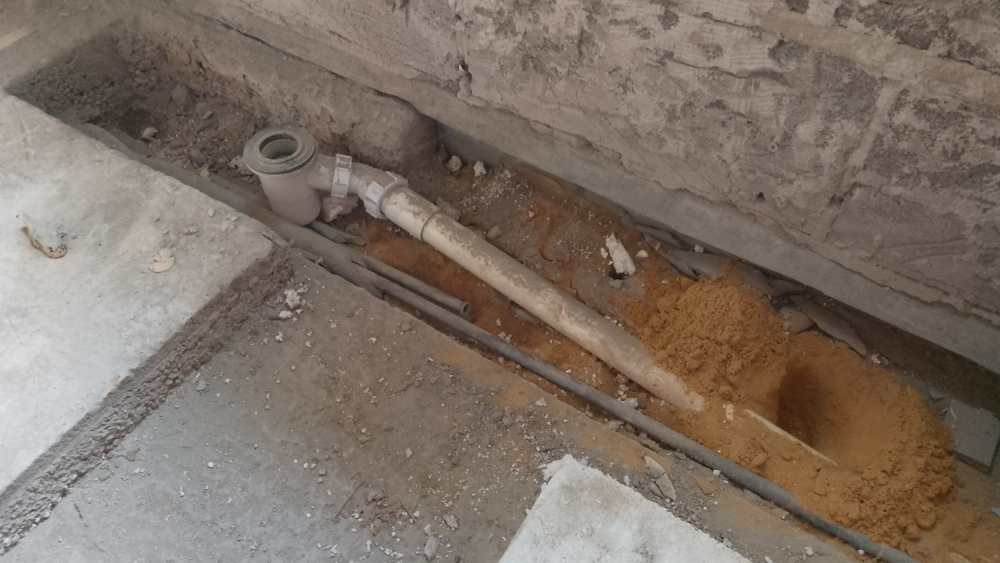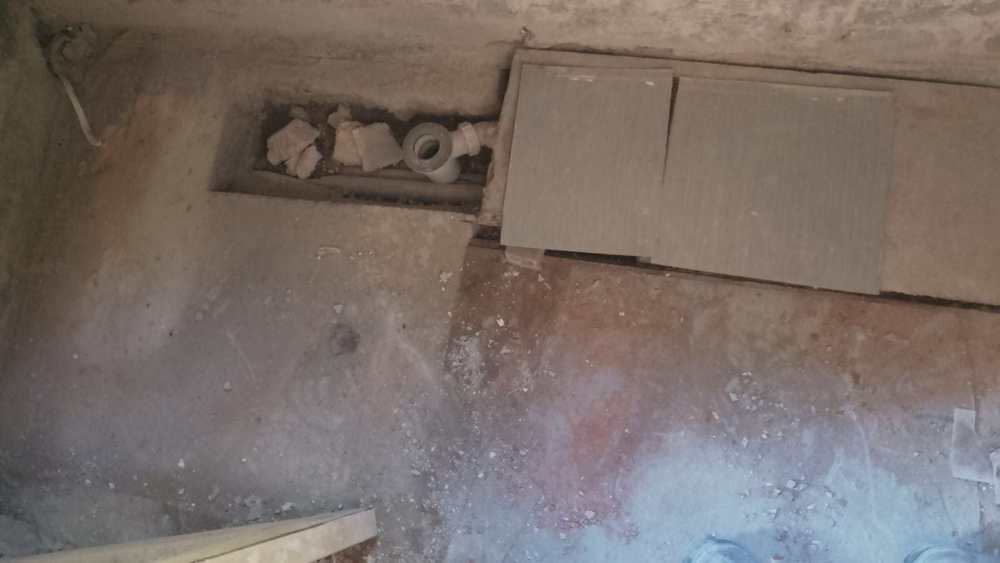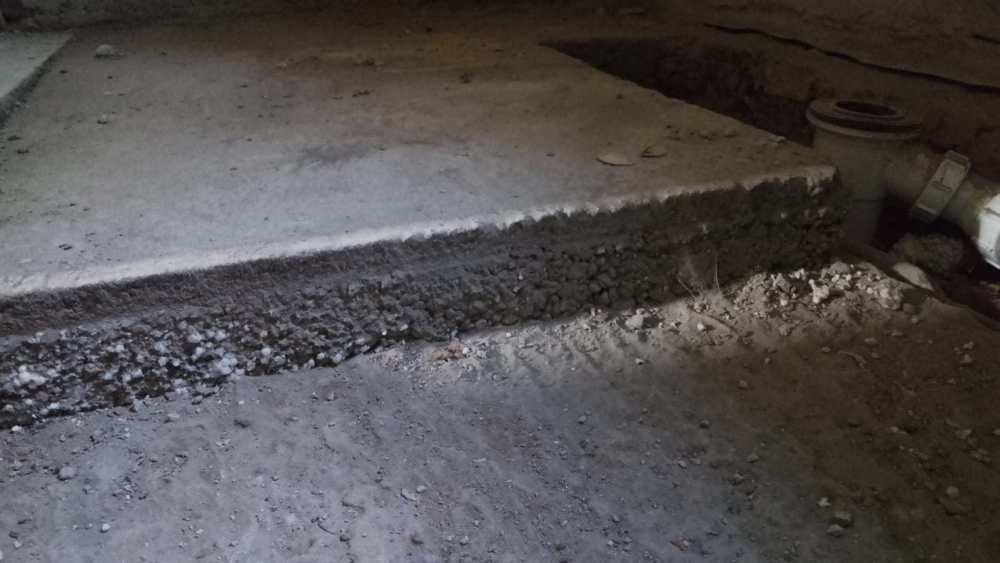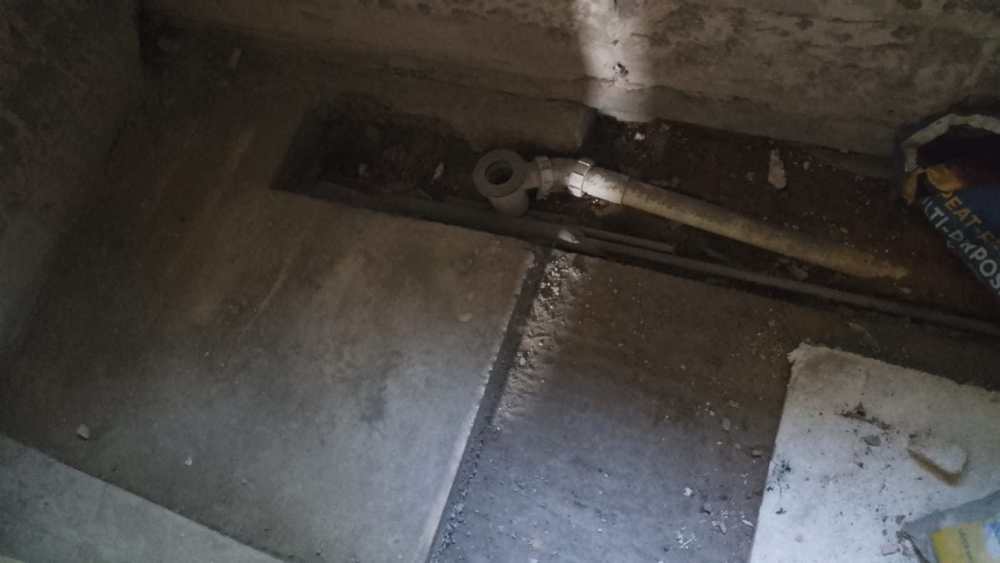
Workerbee
Members-
Posts
27 -
Joined
-
Last visited
Everything posted by Workerbee
-
Floating floors: compression vs vibration
Workerbee replied to Workerbee's topic in Floor Structures
Thank you for finding these @JohnMo - I'll have a look. -
Floating floors: compression vs vibration
Workerbee replied to Workerbee's topic in Floor Structures
Thank you very much for this, @JohnMo Yes you're right, I've had concerns about cost, but I feel I'm trying to find a balance with different factors. It's a bungalow, less than 50sqm. I'm adding 100-125mm PIR in the ceilings and 50mm on the walls. I'll be draft proofing and, although it'll never be ultra airtight, I'll add dmvhr instead of dmv. So hopefully it's a fairly small, fairly well insulated space to heat. A heat pump would be nice, but I can't really afford the cost up front. It's also a very quiet location, and after visiting several heat pumps I didn't feel it would be suitable. Also, with the size of the house, I don't know where I'd fit the extra equipment. Even a uvc is a headache (but I want the better flow rate vs an electric shower)! I have no wet system - it's an all electric house. The electric ufh is mainly just to take the chill off the floor, with a mind to it being used more in the future if I get batteries. Kitchen is about 16sqm, bathroom 4sqm. I also considered adding pipework for wet ufh in the kitchen as well as an electric mat, so it's ready to use if a more suitable system came to market in the future. Storage heaters would be a better idea than oil filled radiators; however, I've never found any that look particularly nice, so I'm a bit stuck. Thanks again -
Floating floors: compression vs vibration
Workerbee replied to Workerbee's topic in Floor Structures
Having spoken to a few technical departments, it sounds like compressive strength and 'vibration' (ie movement that could crack grout) are separate issues. Movement is caused by gaps due to each layer not being perfectly flat. Therefore I might as well use PIR/phenolic instead of XPS. Bonding the layers with pu foam will help with movement. In terms of what to put on top of the PIR: I was thinking xps tile backer board, as it adds more insulation and high rigidity. However, one technical department thought this might not work as it's not tongue and groove. Are they right? If so, and I need to use something with tongue and groove, is there anything offering better moisture resistance or thermal qualities than chipboard? Thanks! -
Floating floors: compression vs vibration
Workerbee replied to Workerbee's topic in Floor Structures
Thank you for the replies, and sorry for my poor explanation! It's a bungalow, and in terms of compressive strength I think any of polystyrene, PIR or XPS should be fine. I've done a crude drawing of what's currently there: The finish is currently carpet or tile. I'm basically just thinking of replacing the polystyrene with either PIR or XPS (ravatherm seems to have a decent lambda value), and replacing the chipboard with insulated tile backer board. This will mean I can bond everything together with suitable adhesive so that it's technically no longer floating, because the finish will be natural stone, which can obviously cause issues on a floating floor otherwise. I wondered if the ravatherm might have two benefits over PIR: would the fact it's not foil faced mean it bonds better? And more importantly does the higher compressive strength equate to lower vibration, or is that a separate characteristic? It's an all-electric house, so that's why I'm thinking of electric ufh. It'll probably be secondary heating, but given I'll be installing oil filled radiators it'll end up being just as expensive! Thanks again. -
Hello! I know floating floors have been discussed before, but I wanted to check my thinking with you guys before going ahead. I want to install natural stone and electric ufh on top of a floating floor in the kitchen and bathroom. Currently the buildup is concrete slab, then 50mm polystyrene, a vcl then 22mm t&g chipboard and carpet/stick-on vinyl tiles. Current ideas are: - 60mm ravatherm XPS, bonded to slab with approved adhesive, then 6mm insulated tile backer board. This would eliminate the floating floor as everything's bonded. XPS also has very high compressive strength; but does this also mean low vibration? - 50mm PIR or phenolic, then 10mm insulated tile backer board. Again, I could bond this with pu adhesive; it's only being squashed, so the fact it's foil faced shouldn't matter? - PIR/phenolic then insulated routed XPS boards for wet ufh pipework, then electric ufh mats above. I don't have gas, and heat pumps aren't currently suitable for my property, but this would give electric ufh now and the option for wet ufh should a suitable product come to market in the future. - if none of these is an improvement, then leave as is. So it's basically xps Vs PIR/phenolic: very high compressive strength vs better insulation. But does compressive strength mean low vibration for fitting stone? Can PIR be adhesive bonded to the slab? Thanks!
-
I'm looking at the direct, electric heated sunamp model as I'm an all electric house. So does this mean I was right in thinking the sunamp can't be 'overcharged' to increase its storage like a direct uvc can be? I'd been looking at the 210 version because I thought it would be overkill for two people; it's sometimes quoted for 6 person houses. But if my back-of-fag-packet sums were right, then even a 210 wouldn't be enough. Only an 'overcharged' - or at least above 55 degrees - uvc would do it, with the additional benefit of a second immersion if a boost was needed. As @SteamyTeasays, though, I'd need to check for thermal cutouts.
-
Thank you everyone - it's been very useful hearing your experiences and knowledge. I've continued my research (ie put off making a decision); leaving aside the customer service question for now, I've got a list of pros and cons for the Sunamp vs uvc, which I can post if it might be of use to anyone in future. But one thought occurred which might swing it decisively in the uvc's favour, and it's that you can 'overcharge' a uvc - ie increase the capacity by keeping it at a higher temperature, which you can't with the Sunamp. I'm thinking of the Sunamp eplus (direct) 210 - ie Sunamp say it's equivalent to a 212l cylinder. Mixed down to 40 degrees with an assumed 10 degree cold feed, it produces 301l according to the tech specs. (footnote: is this right? It would imply a temperature directly out of the Sunamp of only around 53 degrees). The only thing I need dhw for (other than hand washing) is a shower. My showers are about 8 mins, my partner about 14 mins. 22 mins total. Assuming a 12lpm shower, that's 22 * 12 = 264l. If I get a great shower experience at 15lpm, that's 22 * 15 = 330. Either way, it doesn't leave me much wriggle room. I would then be relying on a rapid recharge time with on-peak prices, and if we had guests, we're stuck. In winter, even more so. But with a 210l uvc, I could heat it above 70 degrees and get more water volume. Am I missing something?
-
How to approach this wetroom floor...
Workerbee replied to Workerbee's topic in Bathrooms, Ensuites & Wetrooms
Brilliant, thanks @Nickfromwales - that's a much better idea than mine! Is compressive strength related to vibration in a floating floor ie the higher the compressive strength of the insulation, the less risk of stone tiles failing? If so, whether I could go for something like Ravatherm XPS X 300 SL and then a layer of insulated backer boards over the top. Or whether it's simply the act of bonding the insulation to the slab that eliminates the floating floor, regardless of compressive strength. In that case, I could perhaps go for max insulation value with something like tissue faced phenolic boards. -
Thank you for that, @Russdl. Do you find the flow rate is as good as a uvc? Sunamp mentions main pressure hot water but nothing about flow rate, and I wondered if it might get restricted in order to maintain temperature, particularly when the incoming mains temperature drops in winter. I'm keen to have a decent shower experience!
-
Thank you @JohnMo - yes, £250 seems very cheap, which made me question it. Rough prices on text message rather than a formal quotation make me nervous! My fear would be deciding on a uvc over the sunamp then finding I can no longer get hold of him when the time came. The 210 was the sunamp size (uvc litre equivalent); the next one down is 150, and with potentially 4 showers a day from a powerful shower, I thought I should play it safe. If going with a uvc I was thinking of a 180l. I'd probably go with the multibloc solution. On paper, the sunamp is the much better solution for me both in size and price, so it's very sad that it's let down by reliability and customer service. I could forgive the former if the latter was excellent. That's why I wondered if anyone had had experience in the last year or so in the hope that things had improved, as much of the online discussion is from 2023 or earlier.
-
One was £2230, and the other was £3600. This is for a direct uvc (I think one was 170l gledhill, the other was unspecified) and pipework. Two others didn't turn up, another wanted to charge to quote, and the sixth offered to do it for £250 labour if I piped up to the cylinder (which is what I requested, to keep costs down). At that price, I wonder what he'd be like. Alternatively, I can get a 210 directly heated sunamp for £2k and fit it myself. Coupled with having a small property where space is an issue, the sunamp seemed a great solution in theory. Thank you for sharing your experience, @Nickfromwales - very useful. I'd read your comments on a previous thread when I was researching. It would be a great shame if quality and service hasn't improved.
-
Thanks @nod - what was the issue the installers had with them?
-
Thanks @JohnMo - no, I couldn't seem to find much beyond about 2023. I got the impression from the threads I'd read that most of the issues (leakages, charging only after dropping below 50%, etc) were mainly from early models. I'm an all-electric house, so I'm looking at the direct version (Thermino ePlus). The size and shape is the main attraction for me, as I could stick it in a cupboard. In terms of a direct unvented cylinder, I could find a way to fit one in if I had to, but it's not ideal. Finding an installer isn't straightforward, either; of the 5 or so I've had around, two didn't bother quoting, two were expensive to the point the Sunamp is the cheaper option, and one was suspiciously cheap.
-
How to approach this wetroom floor...
Workerbee replied to Workerbee's topic in Bathrooms, Ensuites & Wetrooms
I'm thinking I might starting insulating the room and then I'll have more of a feel for the space that's left. What are people's feelings for dealing with a floating floor? It's a concrete slab and I'll add insulation, then electric ufh, and stone tiles. The kitchen will have the same build-up. I'm thinking the safest way to avoid issues is to use XPS tile backer boards: as well as their very high compressive strength, I could stick them directly to the slab, which effectively eliminates the floating floor. The downside is cost - putting down 70mm tile backers on the bathroom and kitchen (c. 16sqm) might not leave much change from a grand. Kingspan reckons 50mm PIR topped with 22mm chipboard or marine ply would be fine, but I'm not so sure... -
Hello! What are people's feelings about the Sunamp Thermino in 2025? I've read every discussion thread I can find, including a few excellent detailed ones on this forum; however, many of them seem to be from a few years ago and I couldn't find much recent discussion; and given this is a rapidly emerging technology I thought it might be worth revisiting. The main benefit is size; there are others, but that's the key one. On the other hand, many of the threads mentioned issues with customer service, and reliability. Towards the end of several threads I got the impression some of the reliability issues were to do with early models, and firmware updates and newer versions had solved them. Is this the case, and has the customer service improved, too? Any thoughts greatly appreciated!
-
How to approach this wetroom floor...
Workerbee replied to Workerbee's topic in Bathrooms, Ensuites & Wetrooms
Hello again! Here's a basic diagram of the tiny bathroom. It's actually slightly larger but I've taken into account the insulation I'm intending to add. I'm thinking I'll keep the shower in the same location as the old one, but remove the raised slab as previously mentioned. Preferably I'll build curved stud walls so it's a walk in shower, but might have to resort to a glass door if space is too tight. I'll put the toilet and basin on the far side against the 1610mm wall. -
How to approach this wetroom floor...
Workerbee replied to Workerbee's topic in Bathrooms, Ensuites & Wetrooms
Yes, I can put something together. Given that the shower was going in the same location as the old one, I'd just been intending to find a former that could accommodate where the waste currently was, but I guess it could be moved and I could cut into the slab to fit it. -
How to approach this wetroom floor...
Workerbee replied to Workerbee's topic in Bathrooms, Ensuites & Wetrooms
Brilliant, thank you! Just one other thing - the slab finishes short of the wall and the waste is currently bedded on sand (I think there's a dpm under the sand). Am I okay to leave this as it is and just lay the wedi boards across, notching the underside to accommodate the waste pipe as it rises through the floor? Or should I provide more support for the boards? I will remove the u-shaped concrete that's sitting on the slab and which supported the old shower tray, and replace it with wedi as you suggested. And should I replace the waste to use new plastic, or is the old okay? Thanks again - I feel I know where I'm going with this now! -
How to approach this wetroom floor...
Workerbee replied to Workerbee's topic in Bathrooms, Ensuites & Wetrooms
Thank you very much for this, @Nickfromwales - that's very useful. So it sounds like xps tile board is best for stability for the whole room, (ie under the shower former and everywhere else, for tiling on to). I can stick the xps to the concrete slab and it will help eliminate the floating floor issue. Can I increase the thickness without losing stability? The room previously had 50mm polystyrene and 22mm chipboard, so I've potentially got around 75mm to play with and I'm concerned 20mm wedi board wouldn't be a lot of insulation. Or could I potentially use phenolic/PIR underneath then a thick layer of wedi board on top? Thanks again! -
How to approach this wetroom floor...
Workerbee replied to Workerbee's topic in Bathrooms, Ensuites & Wetrooms
I'm now wondering if I can do a hybrid option for supporting the tiled floor and shower former. Could I get the best of both insulation and support by having eg 40mm phenolic then a thick XPS board eg 30mm on top that I could tile on to? And for the shower former just have XPS underneath (50mm?) and miss out the screed, to maximise the insulation? -
Hello! I'm turning my tiny bathroom into a wetroom and I had a couple of questions I hoped you guys could help with. Current floor is concrete slab, with 50mm EPS then chipboard, and previously had a shower cubicle with raised tray. I'm taking it back to the slab and hope to put a wetroom shower former where the shower tray used to be, electric ufh and stone tiles. First question is about supporting a wetroom shower former and floor tiles on a floating floor. Having done research and spoken to insulation and shower tray manufacturers, I've got a few possible solutions I want to run past the forum: 1) Phenolic/PIR insulation (preferably 75mm), then cement board (22mm?) - insulation manufacturer thought this would be fine to tile on, and would be my preferred option insulation-wise, but I'm aware tilers sometimes say tiling a truly floating floor isn't a good idea. I'm also unsure how I would then install the shower former, as I presume it couldn't just rest on insulation. 2) XPS tile backer board - maybe 90mm for most of the floor as I could do away with the chipboard. Leave a rectangle out for the shower former, and drop in 30mm XPS then 38mm screed, then place the 22mm former on top to bring it level with the rest of the XPS floor. Advantage is better compressive strength with XPS and it could be stuck to the slab, so creating a more mechanical fix between tiles and slab than a usual floating floor. Worse insulation, though. 3) Phenolic/PIR fitted between wooden joists screwed directly to slab, mimicking floor joists that the shower former could slot between. Advantage is high strength; downsides are large thermal bridges throughout the floor, and wood in a wetroom floor, where it could rot. Second question is about how to deal with the current shower tray slab and drain. I've attached a few pictures. Where the raised shower tray used to be, there is a horseshoe-shaped concrete slab on top of the concrete floor slab, that came level with the insulation and chipboard on the rest of the floor. I'm thinking I should chop this out with an angle grinder and start again from the floor slab, using one of the above floor buildups. The drain is resting on sand, as there is no slab in this part of the floor. Can I keep it like this and just connect into the existing drain? Thank you for any advice.
-
Has anyone else used clay plaster, and were the advertised benefits over gypsum worth it?
-
That must have been annoying! With it being based on natural products, I feel there must be a way of making some. What was it like to work with, and what was the end result like?
-
Hello! Does anyone know how I could make up some clay plaster to experiment with? I'm interested in trying it, but nowhere near me sells it, and the idea of paying delivery for one bag - and then having 20kg left over when I realise it's not right for me - doesn't feel right. I'm thinking I could get a small bag of clay powder, and add marble powder, but would it need anything else? And would it matter what type of clay? I'd prefer white that I can pigment, but there are different types of clays available online for different purposes. Also, has anyone here used clay plaster before? Does a skim of it help with moisture buffering, condensation, better indoor environment etc or is all of that overplayed? Thank you!
-
Have thermal stores had their day?
Workerbee replied to Workerbee's topic in Boilers & Hot Water Tanks
Thank you, yes you're right, but I'm putting a stone floor down in the kitchen so I'm keen to have something to take the chill off it just in that room. So that's why I'm wondering about whether to go electric ufh just as a secondary heat source, or install wet ufh (in combination with a thermal store that does heating) which can potentially be upgraded to a primary heat source if I get a heat pump one day. For primary heating, storage heaters definitely make most sense, but I've actually been looking at oil filled radiators, partly because I haven't found any storage heaters I like the design of (daft, I know, because it'll end up costing me), and partly because I always think of the bad rep of storage heaters of old. But I presume they're a lot better now? You mentioned about a uvc lasting all day - what sort of size would I need? Plumbers I spoke to suggested around 150l for 2 people. So I'm thinking maybe the 210l if I went the thermal store route, to make up for the different way it loses heat. I suppose you can always increase your stored hot water by increasing the temp, but I'm feeling it would be better to oversize than undersize a cylinder, whatever type it is.

